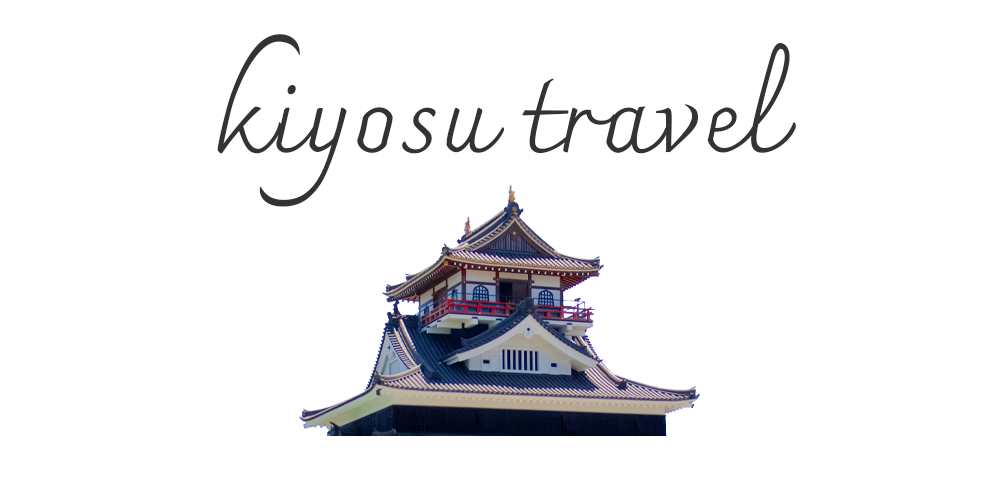今の季節に人気の観光地Popular tourist destinations for this season
清須城
●What is Kiyosu Castle?
Kiyosu Castle was built by Yoshishige Siba in 1394. In 1555, Oda Nobunaga took Kiyosu Castle and used it as a base from which to unify the country. In the Battle of Okehazama in 1560, Nobunaga marched out from Kiyosu Castle and defeated Yoshimoto Imagawa. Nobunaga later moved to Komakiyama Castle, but Kiyosu Castle became the residence of Oda Nobuo, who succeeded Nobunaga as governor, and played an important role thereafter.
●Historical Matters
In 1582, after Nobunaga's death in the Honnoji Incident, a meeting was held at Kiyosu Castle to decide the succession of the family governor. This was the “Kiyosu Conference.

The Kiyosu turret at Nagoya Castle is said to be a relocated version of the keep of Kiyosu Castle.
The area around Kiyosu Castle is also known for its cherry blossoms.
Present-day Kiyosu Castle
The current Kiyosu Castle keep was rebuilt in 1989. Inside the castle, there are exhibits introducing the history and culture of Kiyosu. Events are also held to allow visitors to experience the Warring States period, such as trying on armor and experiencing the firearms.

Access
15 minutes on foot from Shin Kiyosu Station on the Meitetsu Nagoya Main Line
15-minute walk from Kiyosu Station on the JR Tokaido Main Line
Kiyosu San-Omiya Hiyoshi Shrine
●History
Kiyosu-sanomiya Hiyoshi Shrine was built in 771 by Emperor Konin in the 2nd year of the Hogame Era (771). At that time, epidemics were prevalent and people worshipped Susanoo-no-Mikoto together with Okonoki-no-Mikoto as their clan deity to eliminate illnesses. After the national government of Owari was moved to Seishu at the end of the 13th century, the shrine was worshipped as the general clan deity of Seishu and was a large shrine with a precinct area of over 4,000 tsubo. In 1580, Oda Nobuharu, the Seishu castle representative, invited Oyama Kakui-jin and 21 regent shrines from Hiyoshi Shrine in Sakamoto, Omi, and the shrine has been handed down to the present day. After the Meiji era (1868-1912), the company name was changed from Sannomiya to Hiyoshi Shrine, and the shrine was revered as a prefectural shrine.

●deities
Ohonamuchi no Mikoto: Believed to be a god. Susanono-no-mikoto: God of good luck and protection from bad luck. Oyamagui no Mikoto: Believed to be the deity responsible for a good harvest and the growth of trees, as well as the guardian deity to ward off evil and evil spirits.

●Relationship with Toyotomi Hideyoshi
It is said that Toyotomi Hideyoshi's mother prayed at this shrine and was given Hideyoshi. Therefore, Hideyoshi's childhood name was named Hiyoshimaru.
Access
Approximately 8 minutes on foot from Shin Kiyosu Station on the Meitetsu Nagoya Main Line and approximately 8 minutes by car from the Kiyosu-Higashi Interchange
Aichi Asahi Site Museum
summary
The Asahi Site is one of the largest settlement sites in the Tokai region, dating from the Early Yayoi Period to the Early Kofun Period and spanning Kiyosu City and Nishi Ward, Nagoya City, Aichi Prefecture. The site extends 1.4 km east to west and 0.8 km north to south, and is estimated to cover an area of 800,000 to 1,000,000 square meters. Excavations to date have uncovered strong defensive facilities consisting of a moat encircling the site, reverse moats, and random piles, as well as the remains of a bronze bell, a jade-making workshop, and the oldest remains of a jana (a kind of bamboo ware).
The Aichi Asahi Site Museum exhibits these excavated artifacts and reconstructed models, and introduces the lifestyle and culture of the Yayoi period in an easy-to-understand manner. The museum features a diorama of a Yayoi period village and the “Experience Yayoi Village,” which reconstructs the living space of that period, allowing visitors to experience the lifestyle of the people of the Yayoi period. Visitors can also experience the life of the people of the Yayoi period through hands-on programs such as making fire, making clay dummies, and making earthenware.
●Facility Information
Location: 1 Asahi Kaizuka, Kiyosu-shi, Aichi 452-0932
Hours: 9:30-17:00
Closed: Mondays (or the following weekday if Monday is a national holiday), year-end and New Year holidays (December 28 - January 3)
Admission: ¥300 for adults, ¥200 for high school and university students, free for junior high school students and younger
Access: 9 min. walk from Owari Hoshinomiya Sta. on the Tokai Kotsu Jouhoku Line



